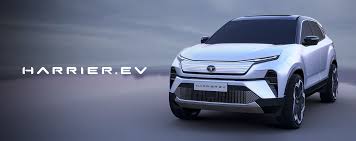The present era is the era of technology. Every moment, some new innovation is making our lives easier. And a remarkable example of this technological revolution is Tesla’s Robotaxi. It is not just an automatic car, but the name of a revolution in the transportation sector. Tesla, which is originally a company founded by Elon Musk, is going to make the dream of the future a reality through this robotaxi.
We will discuss in detail what a robotaxi is, how it works, its advantages and disadvantages, and how it will radically change our future transportation system.
What is a robotaxi?
A robotaxi is basically a car that is capable of transporting passengers without a driver. It is completely automatic and operated based on artificial intelligence (AI). Tesla’s robotaxi will have advanced sensors, cameras, radars, and software that will help it reach its destination correctly by observing its surroundings while driving on the road.

Elon Musk has been dreaming for years that there will be a time in the future when people will no longer have to drive cars. Finally, that future is slowly becoming a reality.
How will Tesla’s robotaxi work?
Tesla’s robotaxi will mainly work using Tesla Full Self-Driving (FSD) software.
This technology includes:
- Advanced camera system, which drives the car on the road by understanding the surrounding conditions.
- Neural networks and AI, which learn and make decisions like humans.
- Mapping and sensing technology, which understands traffic, pedestrians, signals, etc.
No driver is required to drive this car. The passenger will just call the car through a mobile app, and the car will automatically come and pick up the passenger and take him to his destination.
Potential advantages of robotaxi
- Cost-effective travel:
Without a driver, the fare will be reduced significantly. A passenger will be able to travel from one place to another at a low cost.
- Safe ride:
Robotaxis will not suffer from fatigue, carelessness, alcoholism, etc. like humans. Therefore, the chances of accidents are much lower. - Environmentally friendly:
These cars are completely electric, so there is no risk of burning fuel or pollution. - 24/7 service:
Robotaxis can be called at any time of the day or night. There is no need to rest like humans.
Potential challenges and problems
Although this technology is very exciting, it also has some challenges:
- Technical errors:
If there is a bug in the software or a sensor error, there is a possibility of an accident. - Laws and regulations:
In many countries, the operation of autonomous vehicles is not yet legally permitted. - Employment issues:
Taxi drivers may lose their jobs, which can have a major social impact. - Ethical and safety issues:
If an accident occurs, who will take responsibility? The car, the passenger, or the software developer?
Tesla’s plans and future vision
Tesla has announced that it wants to launch a robotaxi service by 2025. According to Elon Musk, this robotaxi will be a vehicle that will be made without a steering wheel and pedals. That is, it will run completely without human touch.
Once it is launched successfully, it will become a huge challenge for companies like Uber, Ola or ordinary taxi services.
Robotaxi and our country – India’s preparation
The use of autonomous vehicles is not yet very common in India. Road conditions, laws, traffic jams, etc. can be a big obstacle for robotaxi. However, if this system can be launched effectively in a densely populated country like India, then it can bring revolution.
Especially in metro cities, where there are traffic problems and transportation crisis, robotaxi will be of great benefit.
Last word
Tesla’s robotaxi is not just a new technology, but it opens the door to the future. This is a huge step towards making people’s lives easier, more affordable and safer. Although there are still many challenges, technology is constantly improving, and along the way, it may one day change the face of our daily commute.
In the future, when we hail a car on a mobile app, and that car comes and picks us up without a driver—then we may remember this time, which was the beginning of robotaxis.



